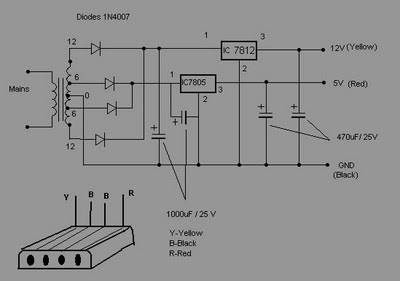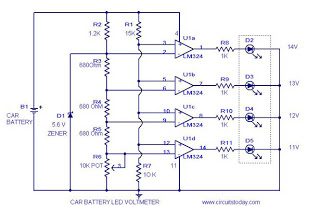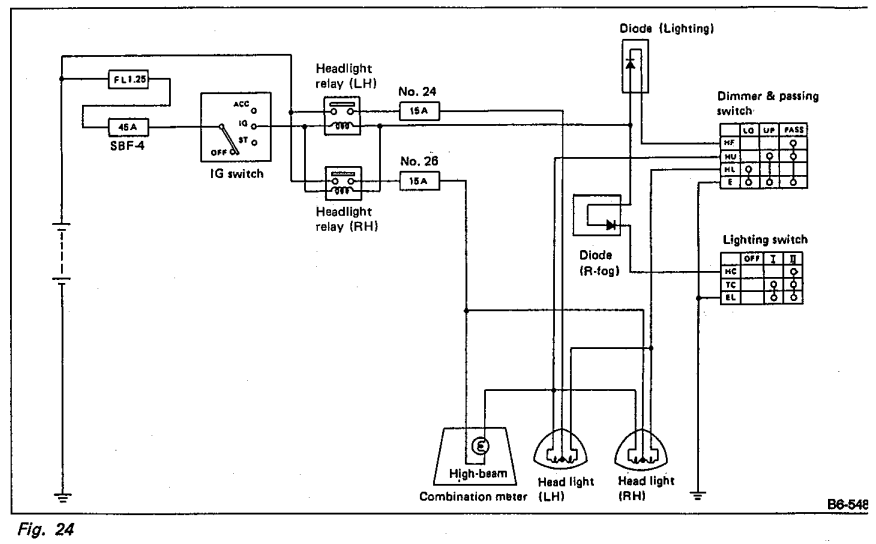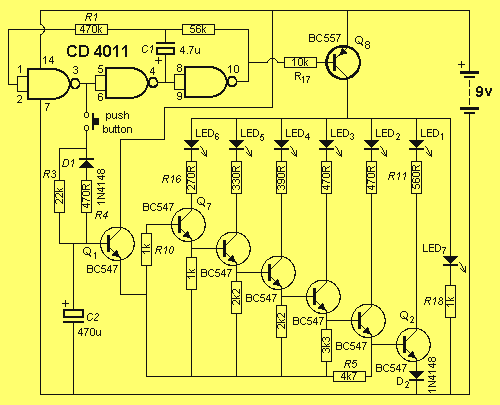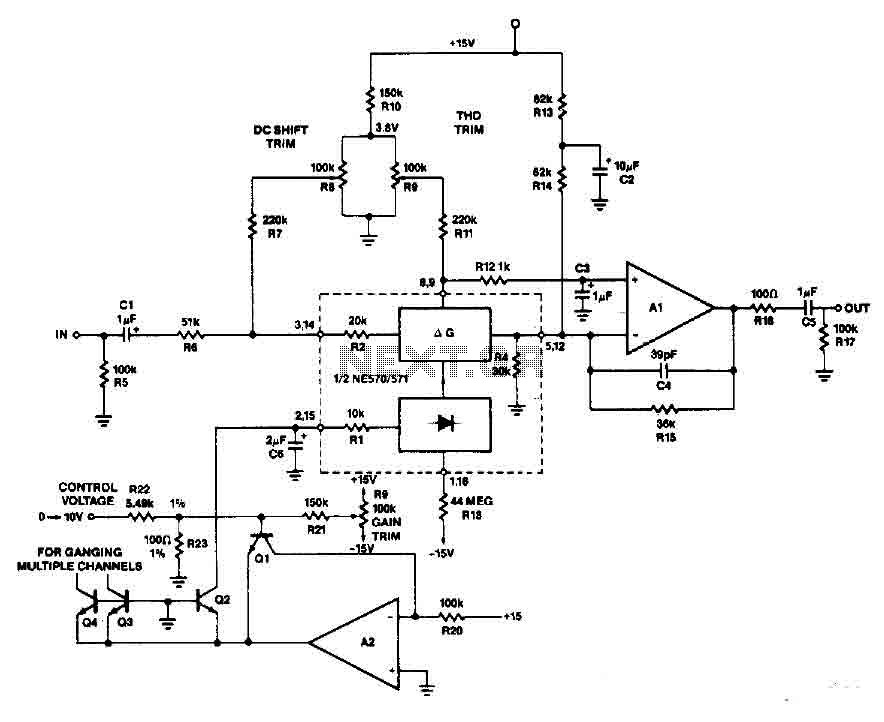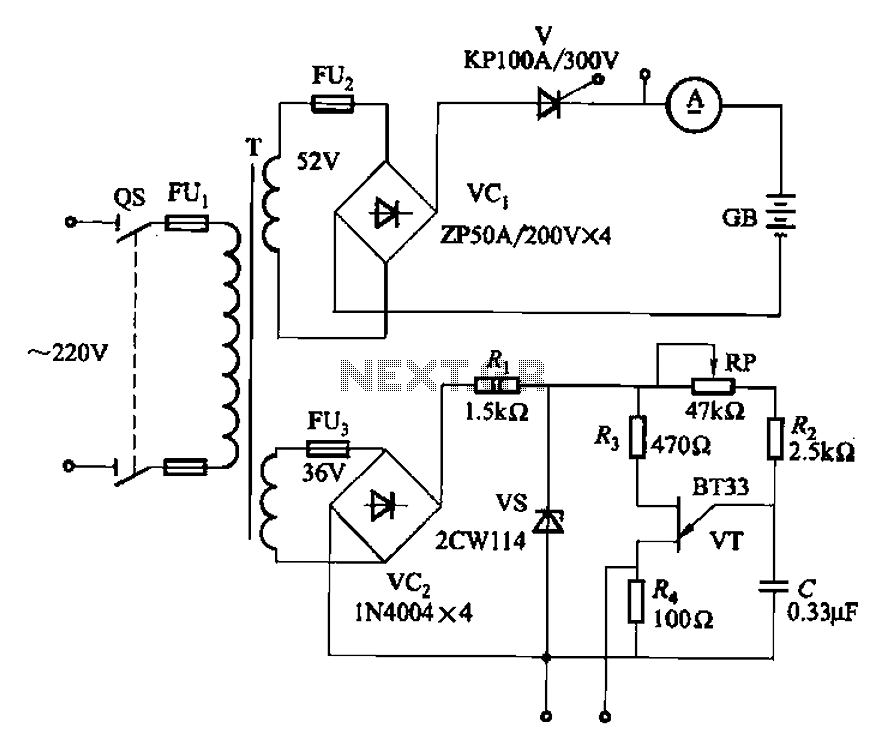
Simple adjustment of high input impedance double wave linear detection circuit RC4558DN
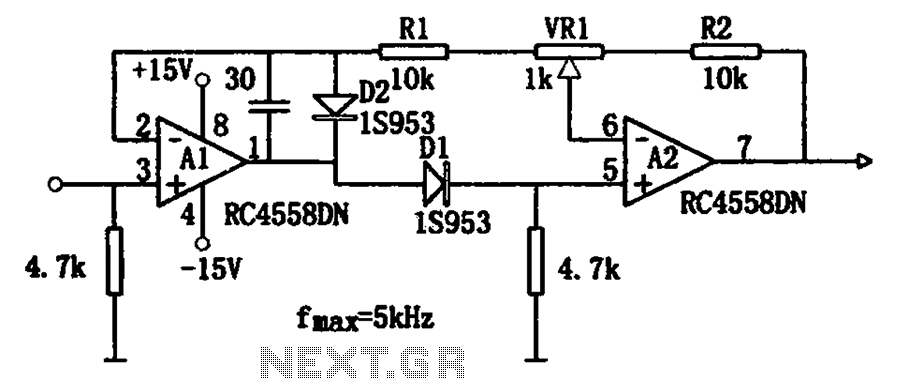
The circuit illustrates a simple method for adjusting the high input impedance of a double wave linear detector. It employs an operational amplifier configured with a negative feedback loop to compensate for the non-linear behavior of the diode used in mobile feedback level (Vf). The design does not require precision resistors, allowing for gain differences to be easily adjusted using the VR1 potentiometer for both positive and negative inputs. The high input impedance at the inverting terminal (A1) minimizes non-linear distortion. During the positive half-cycle of the AC signal, the output of A1 becomes positive, forward-biasing diode D1, which in turn provides a positive input to A2. The output of A2 is also positive, and with resistors R1, R2, and VR1 configured to provide negative feedback to A1, the overall gain behaves like an inverting amplifier with a gain of -1. When the gain adjustment via VR1 remains constant, during the negative half-cycle, A1's output turns negative, reverse-biasing D1 and causing A2's input to drop to 0. In this scenario, A1, through D2, provides negative feedback, effectively functioning as a voltage follower where the inverting input and A2's input AC voltage are equivalent. The gain for the inverting amplifier A2 is set to 1, and adjustments to VR1 can modify the overall gain to maintain unity.
The described circuit operates as a high input impedance double wave linear detector, utilizing an operational amplifier (op-amp) for signal processing. The circuit's configuration allows it to rectify both halves of an AC signal while maintaining minimal distortion due to its high input impedance. The operational amplifier A1 is primarily responsible for processing the input signal, with its output fed back through a negative feedback loop, which stabilizes the gain and ensures linearity across the signal range.
The diodes D1 and D2 serve as rectifying elements, enabling the detection of both positive and negative cycles of the input AC signal. When the input signal is in its positive half-cycle, A1 outputs a positive voltage, which forward-biases D1, allowing current to flow and providing a corresponding positive voltage to the non-inverting input of A2. This configuration results in a positive output from A2, reinforcing the signal through the feedback network formed by R1, R2, and VR1, effectively setting the gain to -1.
Conversely, during the negative half-cycle, A1's output becomes negative, causing D1 to reverse bias. In this state, the input to A2 drops to zero, and the operational amplifier A1 transitions to function as a voltage follower due to the feedback through D2. This arrangement ensures that the input and output voltages of A2 remain equal while maintaining a gain of 1.
The presence of the variable resistor VR1 allows for fine-tuning of the circuit's gain characteristics, accommodating variations in the input signal or component tolerances without the need for precision resistors. This flexibility is crucial in applications where signal integrity and fidelity are paramount, such as in audio processing, instrumentation, or communication systems. Overall, this circuit design exemplifies a robust solution for high input impedance detection with adjustable gain characteristics, suitable for a variety of electronic applications. As shown for the simple adjustment of the high input impedance double wave linear detector circuit. The operational amplifier circuit by the negative feedback loop to compensat e for non-linear diode installed mobile feedback level Vf. Circuit without the use of precision resistors, which is characterized by the gain difference can easily be compensated for by the positive and negative input adjustment VR1 approach. Since the signal from the inverting terminal A1 input, the input impedance is high, it does not appear nonlinear distortion.
Enter positive half cycle of the AC signal, the output of A1 is positive, D1 is forward biased and is turned on, it is also a positive input A2, A2 output is also positive, with R2, VR1, R1 to be A1 beta negative 1 feedback, in general, into a gain of inverting amplifier 1. In this case, when the gain adjustment VRl unchanged. When the input signal is negative half-cycle, A1 output is also negative, D1 is reverse biased, A2 input to 0, the inverting amplifier A2 becomes.
In this case A1 through D2 negative feedback, in fact, it becomes a voltage follower, inverting input and A2 input AC voltage is the same, while working as a gain for the inverting amplifier A2 1. In this case, the gain can be varied to adjust the VR1 A2, adjusting VR1 so that the overall gain is unity.
The described circuit operates as a high input impedance double wave linear detector, utilizing an operational amplifier (op-amp) for signal processing. The circuit's configuration allows it to rectify both halves of an AC signal while maintaining minimal distortion due to its high input impedance. The operational amplifier A1 is primarily responsible for processing the input signal, with its output fed back through a negative feedback loop, which stabilizes the gain and ensures linearity across the signal range.
The diodes D1 and D2 serve as rectifying elements, enabling the detection of both positive and negative cycles of the input AC signal. When the input signal is in its positive half-cycle, A1 outputs a positive voltage, which forward-biases D1, allowing current to flow and providing a corresponding positive voltage to the non-inverting input of A2. This configuration results in a positive output from A2, reinforcing the signal through the feedback network formed by R1, R2, and VR1, effectively setting the gain to -1.
Conversely, during the negative half-cycle, A1's output becomes negative, causing D1 to reverse bias. In this state, the input to A2 drops to zero, and the operational amplifier A1 transitions to function as a voltage follower due to the feedback through D2. This arrangement ensures that the input and output voltages of A2 remain equal while maintaining a gain of 1.
The presence of the variable resistor VR1 allows for fine-tuning of the circuit's gain characteristics, accommodating variations in the input signal or component tolerances without the need for precision resistors. This flexibility is crucial in applications where signal integrity and fidelity are paramount, such as in audio processing, instrumentation, or communication systems. Overall, this circuit design exemplifies a robust solution for high input impedance detection with adjustable gain characteristics, suitable for a variety of electronic applications. As shown for the simple adjustment of the high input impedance double wave linear detector circuit. The operational amplifier circuit by the negative feedback loop to compensat e for non-linear diode installed mobile feedback level Vf. Circuit without the use of precision resistors, which is characterized by the gain difference can easily be compensated for by the positive and negative input adjustment VR1 approach. Since the signal from the inverting terminal A1 input, the input impedance is high, it does not appear nonlinear distortion.
Enter positive half cycle of the AC signal, the output of A1 is positive, D1 is forward biased and is turned on, it is also a positive input A2, A2 output is also positive, with R2, VR1, R1 to be A1 beta negative 1 feedback, in general, into a gain of inverting amplifier 1. In this case, when the gain adjustment VRl unchanged. When the input signal is negative half-cycle, A1 output is also negative, D1 is reverse biased, A2 input to 0, the inverting amplifier A2 becomes.
In this case A1 through D2 negative feedback, in fact, it becomes a voltage follower, inverting input and A2 input AC voltage is the same, while working as a gain for the inverting amplifier A2 1. In this case, the gain can be varied to adjust the VR1 A2, adjusting VR1 so that the overall gain is unity.
